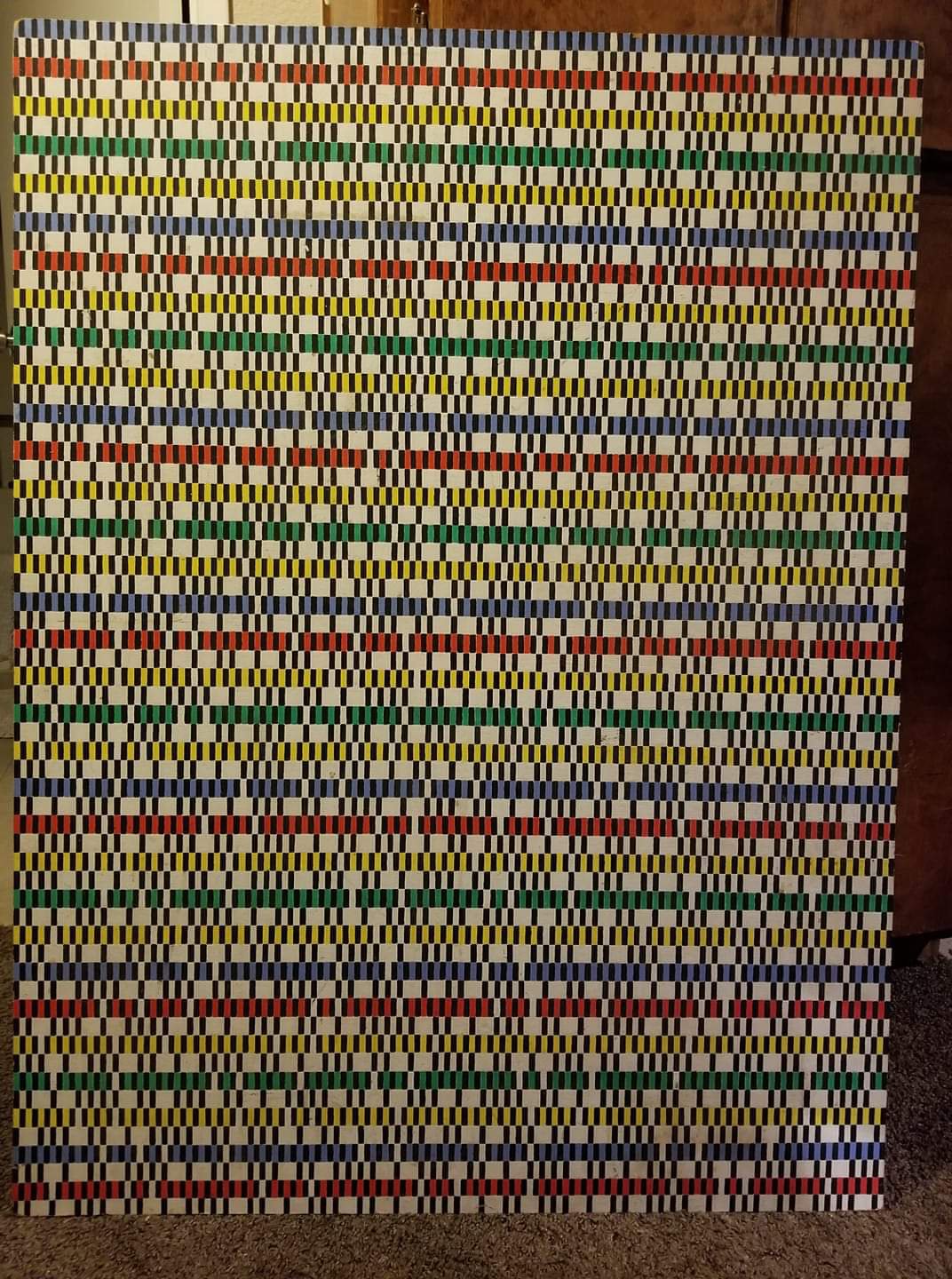An engineer who deceased a few years ago has left behind an unusual painting. Does it contain a message encoded in a binary code?
Once again, an interesting unsolved cryptogram is being discussed on Reddit. As usual, the description of the crypto mystery is quite short:
My friend’s father passed away a while ago. He went to MIT [Massachusetts Institute of Technology] and was an engineer who painted this. His family believes it is in code, but no one has ever solved it.
The Reddit post in question can be found here. Meanwhile, another post about the same topic has been published.
Here’s the painting this mystery is about:

Source: Reddit
Hidden or encrypted messages in artworks are nothing new. Many readers certainly know Kryptos, the famous sculpture located in CIA headquarters in Langley Virginia. The inscription encarved into this artwork is encrypted and a part of it still unsolved. Kryptos is listed at position 4 on my list of the top 50 unsolved cryptograms.
Considering that the painting introduced on Reddit (I refer to it as “MIT cryptogram”) was created by an engineer, it comes as no surprise that it has the appearance of a binary code. It’s certainly possible to transcribe the black, green, red, blue and white bars to a sequence of zeros and ones.
In the rows with a colored background the pattern of the black bars is very regular: each black bar is followed by a non-black one. Perhaps, these lines serve as separators. The rows with a white background have an unregular pattern. It is well possible that they encode something in a binary code.
Meanwhile, about 70 comments on this mystery have been published on Reddit. Here are a few of them:
- Sqorck: Just a guess but it does look like it could be some kind of punch card programming. Which could be converted to ASCII characters perhaps.
- Dashsmashing: I isolated the code as best as possible. Image
- hapes: With only 26 characters in the English alphabet, you need 5 bits to uniquely identify each character. We can assume it’s not in UNICODE because it was painted before unicode became a thing. The colors are in a pattern (as observed by /u/mindraker and others, but since yellow is duplicated within the pattern, that eliminates each row as a bit (and if that was the case, it’s a VERY short message). Generally bar codes encode data using both the black and white spaces. I wonder if this does the same. For instance, the first pattern is PBPBPBPBPBPBWB, that could be 1111110 or 0000001. Alternately, since each color row has an associated white row, maybe the combination of the two is relevant. First row is CB/BW/CB/BW/CB/BW/CB, which is a bunch of 0s or a bunch of 1s? Under the first assumption (each row independent, and 5 bits), we get 00000 01010 00000 01000, which in decimal is 0 10 0 8. If A is 0, B is 1, that’s AJOH, which, um, doesn’t work for me. If we combine the first color row with the first white row, we get 00000 00000 10001 00000. 0 0 17 0. AAQA. Also meaningless.
If a reader has a clue how to decode the message, please leave a comment.
Follow @KlausSchmeh
Further reading: $10,000 worth of crypto-currencies hidden in Lego artworks
Linkedin: https://www.linkedin.com/groups/13501820
Facebook: https://www.facebook.com/groups/763282653806483/



Kommentare (15)